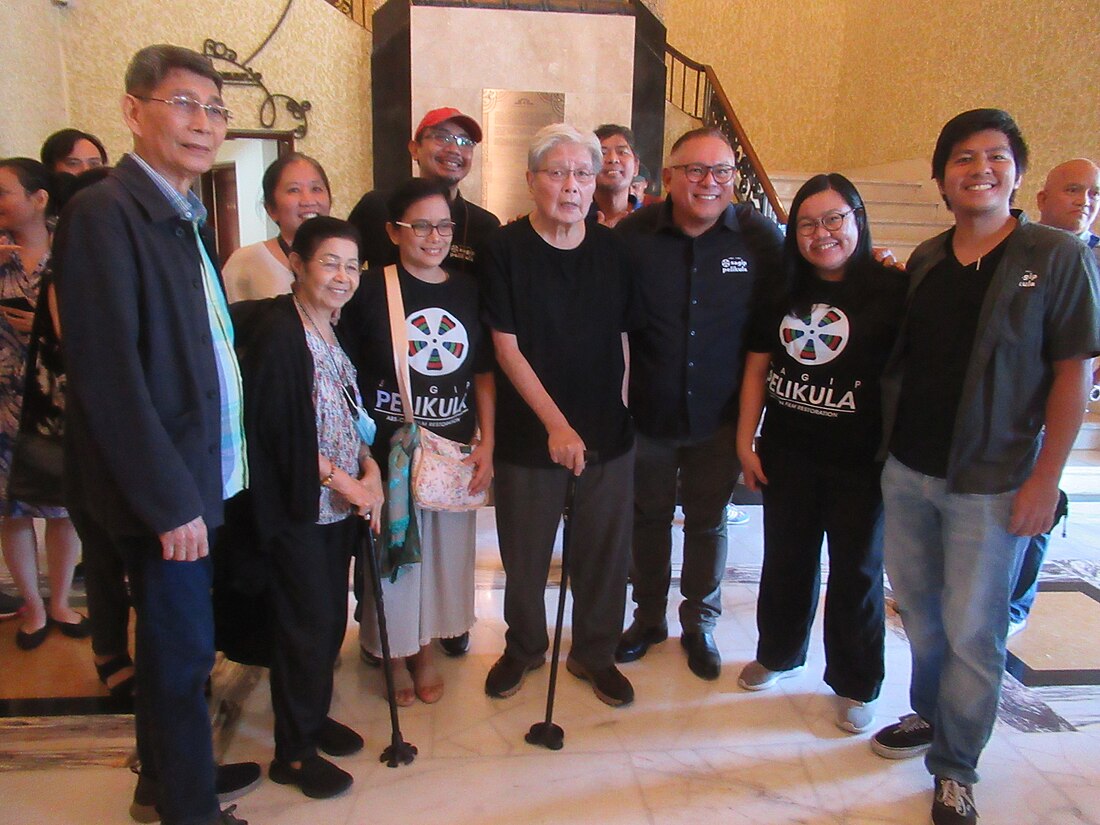Top Qs
Timeline
Chat
Perspective
ABS-CBN Film Restoration Project
Philippine digital cinematography project From Wikipedia, the free encyclopedia
Remove ads
ABS-CBN Film Restoration Project, also known as Sagip Pelikula, was a digital film restoration project of ABS-CBN Corporation in partnership with Central Digital Lab. Launched in 2011, the project was headed by Leo Katigbak of ABS-CBN Film Archives and Manet Dayrit of Central Digital Lab. The goal of the project was to digitally restore and remaster select Filipino films from the archives of ABS-CBN.
The project digitized, restored, and remastered over 240 Philippine films into a 1080p or 2K Digital Cinema Package format with a maximum resolution of 2048x1080 pixels at 24 frames per second. These films have been released through a wide array of platforms including limited theatrical runs, film festivals, free-to-air and cable television, DVDs, pay per view, and over-the-top content platforms such as iTunes.[1] Most of the restoration processes were done by Central Digital Lab in the Philippines with the exception of select films which were commissioned by ABS-CBN to be restored abroad by L’Immagine Ritrovata in Bologna, Italy and Kantana Post-Production in Bangkok, Thailand, and others which were scanned and enhanced in-house. All copyrights to the films restored and remastered are owned in perpetuity by ABS-CBN.[2]
On August 31, 2020, the film restoration project unit downsized its operations as part of the retrenchment by the company after its new legislative franchise for the company's broadcasting operations was denied by the House of Representatives.[3][4][5][6]
On March 31, 2025, the project ceased its operations, citing effects attributed to the 2020 shutdown. It was later confirmed by head Leo Katigbak on his Facebook page on May 1.[7][8]
Remove ads
Restoration process
Summarize
Perspective
The first stage of the process is the scanning of the film negatives or prints into a digital picture and sound raw format. Depending on the film's condition, it may undergo a physical cleaning before the scanning could begin. The scanned materials will then undergo an automated and a painstaking frame by frame digital restoration process. The process involves the digital removal of dirt, scratches, fingerprints, discolorations, molds, tape marks, and other damages in the scanned materials. The process also involves the correction of color, brightness, and contrast into its original form often consulting the original cinematographers of each films whenever possible. Subtitles and watermarks, if present, are also removed in the process. The process also involves the restoration and remastering of sound. This involves the syncing of sound to the picture and the removal of unnecessary noises such as eradicate pops and whistles. Extreme measures were also done to remove copyrighted songs from some films. Dozens of technicians, engineers, and artists work hundreds of hours for each film with restoration cost ranging anywhere between twenty-five thousand pesos and ten million pesos per film.[9][10]
Remove ads
List of notable films restored

Remove ads
References
External links
Wikiwand - on
Seamless Wikipedia browsing. On steroids.
Remove ads

